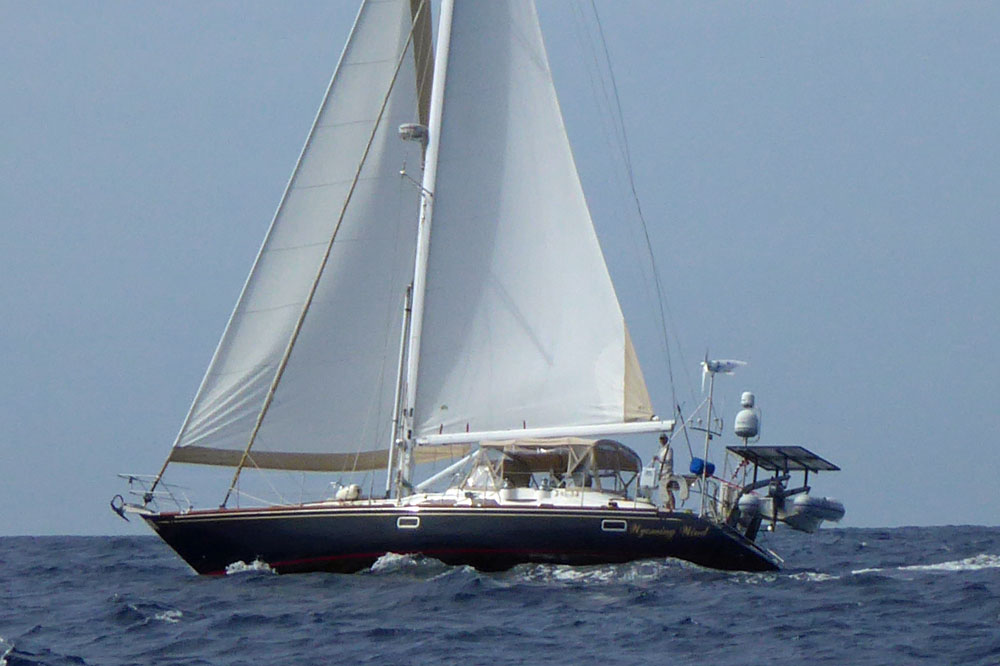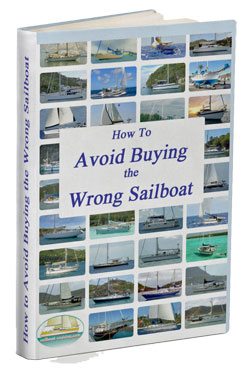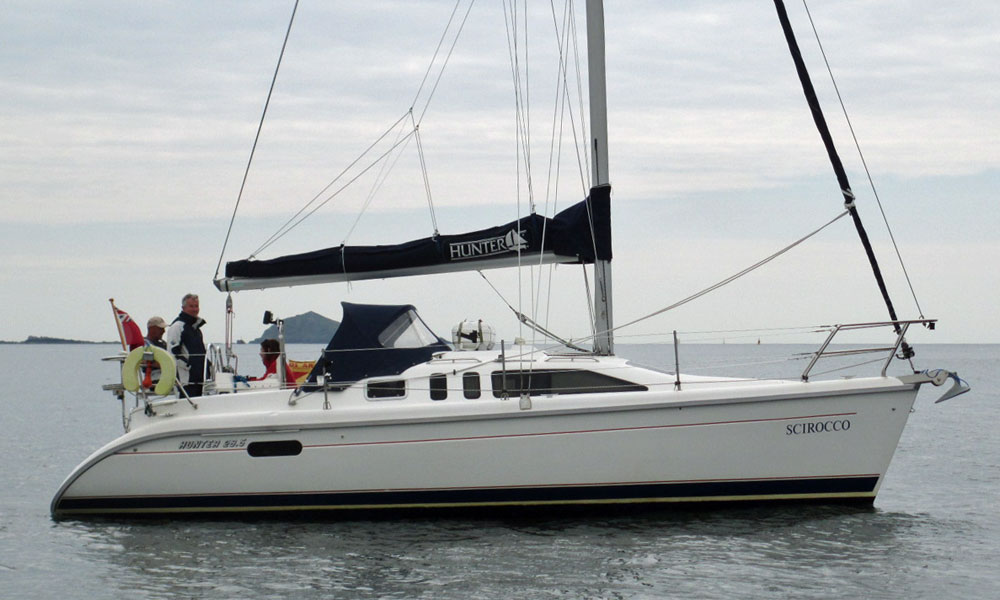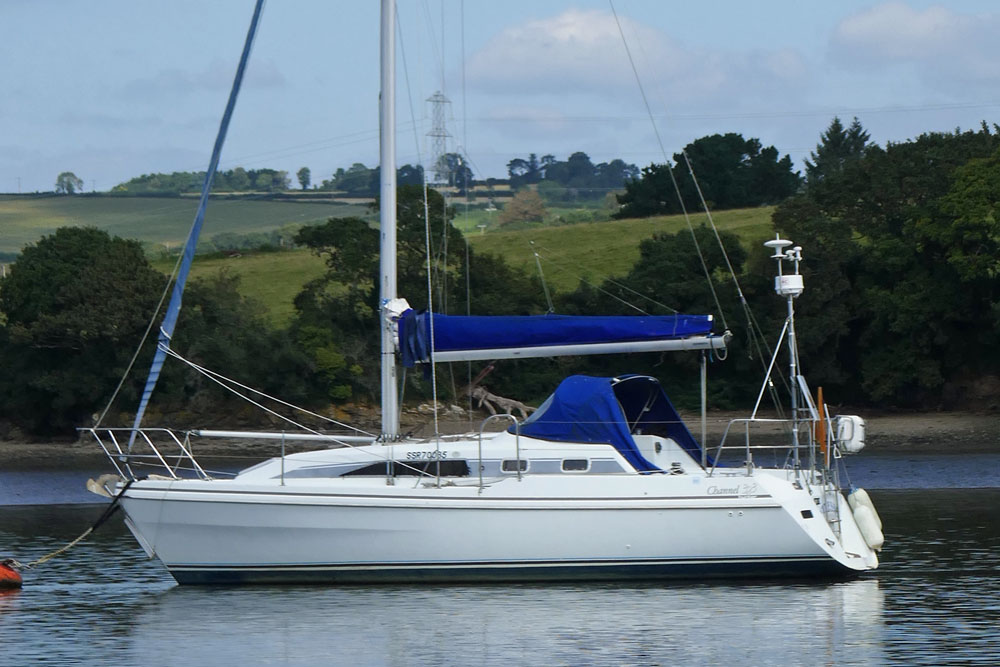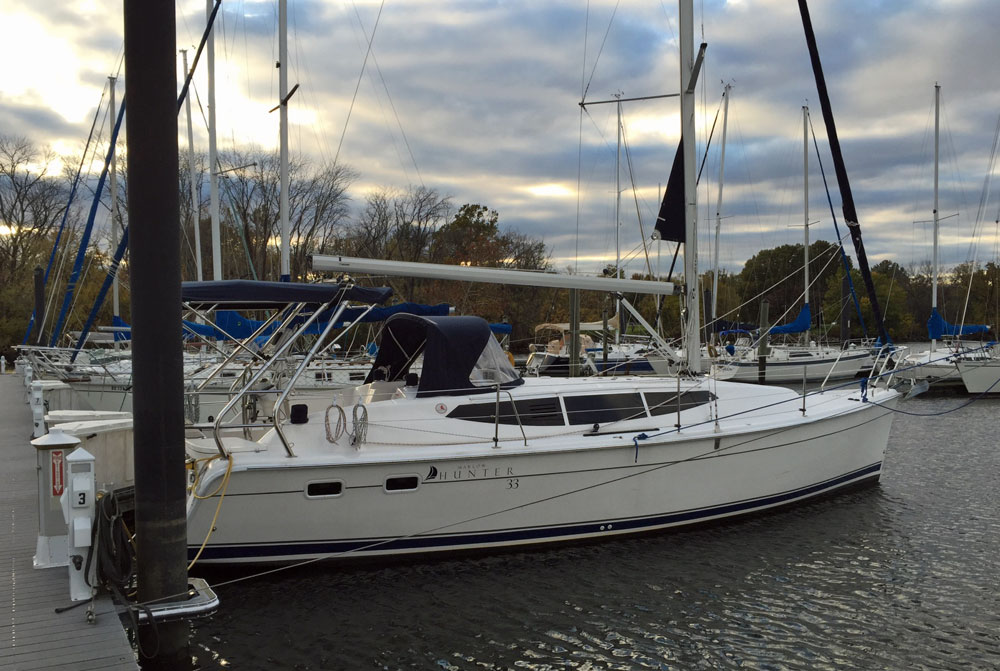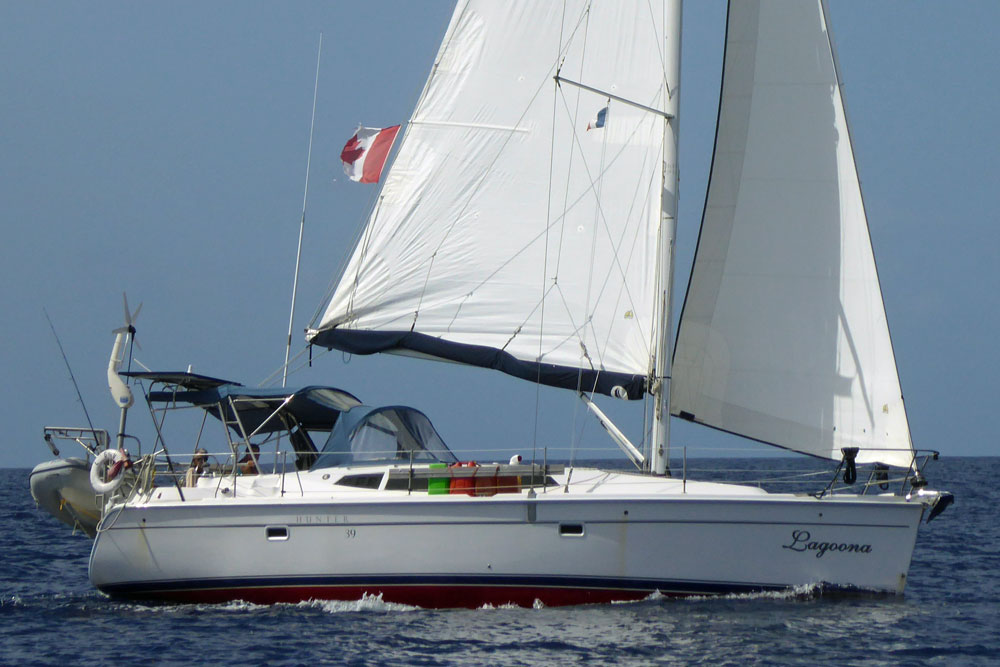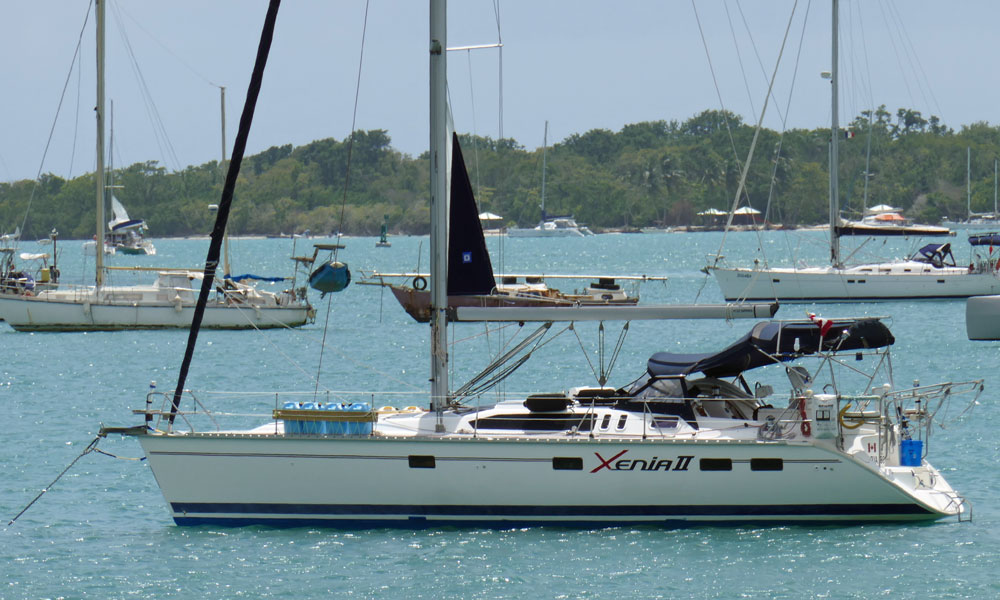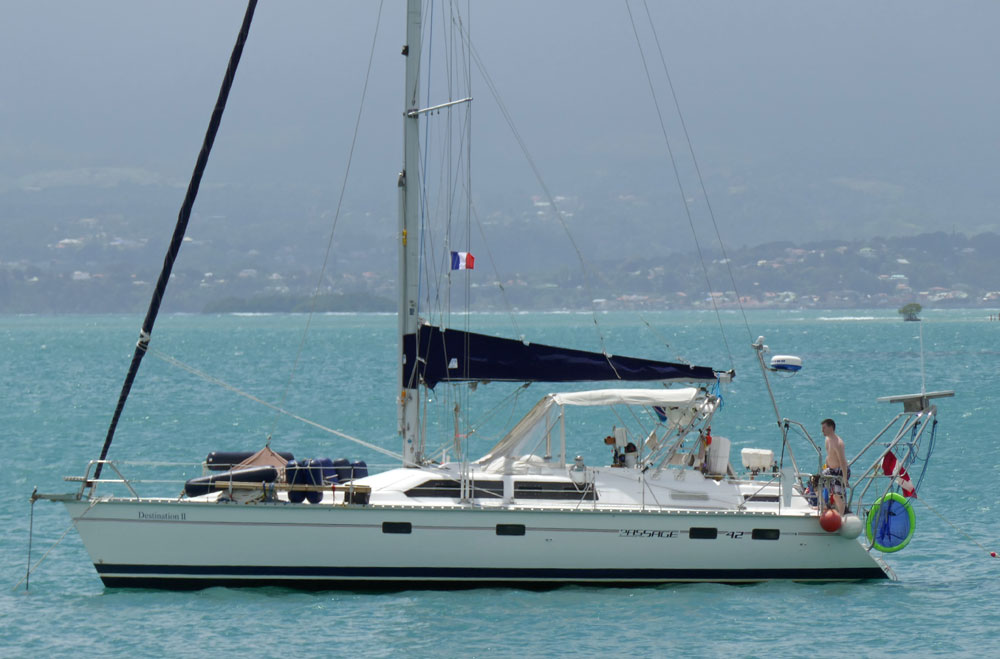- Home
- Cruising Yachts 45' to 50'
- Hunter 49
The Hunter 49 Sailboat
Specs & Key Performance Indicators
The Hunter 49, a light-displacement cutter, was designed by Glenn Henderson and built in the USA by Hunter Marine.
Published Specification for the Hunter 49
Underwater Configuration: Winged keel & skeg-hung rudder
Hull Material: GRP (Fibreglass)
Length Overall: 49'11" (15.2m)
Waterline Length: 43'10" (13.4m)
Beam: 14'9" (4.5m)
Draft: 5'6" (1.7m)
Rig Type: Cutter
Displacement: 32,813lb (14,884kg)
Designer: Glenn Henderson
Builder: Hunter Marine (USA)
Year First Built: 2007
Owners Association: Hunter Owners
Published Design Ratios for the Hunter 49
Sail Area/Displacement Ratio: 20.0
Ballast/Displacement Ratio: 38.2
Displacement/Length Ratio: 174
Comfort Ratio: 30.8
Capsize Screening Formula: 1.9
Summary Analysis of the Design Ratios for the Hunter 49
1. A Sail Area/Displacement Ratio of 20.0 suggests that the Hunter 49 will, in the right conditions, approach her maximum hull speed readily and satisfy the sailing performance expectations of most cruising sailors.
2. A Ballast/Displacement Ratio of 38.2 would usually mean that the Hunter 49 would have a tendency to heel excessively in a gust, and need to be reefed early to keep her sailing upright in a moderate breeze.
However, as she has much of her ballast concentrated in a wing at the foot of the keel, she's likely to be considerably stiffer than her published Ballast/Displacement Ratio might suggest.
3. A Displacement/Length Ratio of 174, tells us the Hunter 49 is clearly a light displacement sailboat. If she's loaded with too much heavy cruising gear her performance will suffer to a degree.
4. Ted Brewer's Comfort Ratio of 30.8 suggests that crew comfort of a xxxx in a seaway is similar to what you would associate with the motion of a moderate bluewater cruising boat - a predictable and acceptable motion for most seasoned sailors.
5. The Capsize Screening Formula (CSF) of 1.9 tells us that a Hunter 49 would be a safer choice of sailboat for an ocean passage than one with a CSF of more than 2.0.
Hunter 49: A Spacious and Comfortable Cruiser
The Hunter 49 has a wing keel, a spade rudder, and a fractional sloop rig with a deck-stepped mast and swept-back spreaders. The boat has in-mast furling for the mainsail and a roller furling genoa for the foresail. The spars are made of aluminum. The boat is steered by twin wheels at the aft cockpit, which also has a folding table, cushioned seats, and an arch that supports the traveler and the bimini top. The boat has a bow thruster for easy maneuvering in tight spaces.
The Hunter 49 has a length overall of 49.5 feet (15.1 m), a waterline length of 43.9 feet (13.4 m), a beam of 14.8 feet (4.5 m), and a draft of 5.6 feet (1.7 m) with the wing keel. The boat displaces 32,813 pounds (14,884 kg) and carries 12,500 pounds (5,670 kg) of ballast. The boat has a fuel capacity of 150 US gallons (570 L), a water capacity of 200 US gallons (760 L), and a holding tank capacity of 52 US gallons (200 L). The boat is powered by a 75HP Yanmar marine diesel engine.
Accommodation
The Hunter 49 has a spacious and comfortable interior that can accommodate up to eight people in three cabins and two heads. The master cabin is located forward and has a centerline queen berth, two hanging lockers, two drawers, two cabinets, and an ensuite head with a separate shower stall. The two aft cabins have double berths, hanging lockers, shelves, and cabinets. The aft head is accessible from both the port cabin and the saloon.
The saloon is bright and airy, thanks to the large windows and hatches that provide natural light and ventilation. The saloon features a U-shaped dinette to starboard that can seat six people comfortably and convert into a double berth if needed. To port, there is a settee that can also serve as a single berth. A flat-screen TV with Bose surround sound is mounted on the forward bulkhead above the dinette.
The galley is located to starboard aft of the dinette and has ample counter space and storage for cooking and provisioning. The galley is equipped with a three-burner stove with oven, a microwave oven, a double stainless steel sink, a top-loading freezer, a front-loading refrigerator, and a trash compactor.
The navigation station is located to port aft of the settee and has a large chart table with an adjustable seat, an electrical panel, an instrument panel, and a VHF radio.
Hull and Deck
The Hunter 49 has a solid fiberglass hull with Kevlar reinforcement in high-stress areas. The hull shape is designed to reduce drag and improve performance while maintaining stability and comfort at sea. The hull has a flared bow that deflects spray away from the deck and a reverse transom that creates more space in the cockpit and the aft cabins.
The deck is made of fiberglass with balsa core for stiffness and weight reduction. The deck has molded-in nonskid surfaces for safety and traction. The deck layout is simple and efficient, with all lines led aft to the cockpit through sheet stoppers and electric winches. The boat has a double anchor roller, an electric windlass, a large anchor locker, and a divided chain locker at the bow. The boat also has a sugar scoop stern with a swim platform, a swim ladder, a hot and cold shower, and a storage locker.
Mast and Rigging
The Hunter 49 has a fractional sloop rig with a deck-stepped mast and swept-back spreaders. The mast is made of aluminum and has in-mast furling for the mainsail. The boom is also made of aluminum and has an outhaul and a topping lift. The boat has a stainless steel wire standing rigging and a low-stretch Dacron running rigging. The boat has a roller furling genoa for the foresail, which is attached to the forestay with a Furlex system.
The sail area of the Hunter 49 is 1,277 square feet (118.6 m2), with 563 square feet (52.3 m2) for the mainsail and 714 square feet (66.3 m2) for the genoa. The sail area to displacement ratio is 19.9, which indicates a good balance between power and stability. The boat has a mast height of 63.33 feet (19.3 m) above the waterline.
Keel and Rudder
The Hunter 49 has a wing keel that provides good performance and stability while reducing draft . The keel is made of lead and is bolted to the hull with stainless steel bolts. The keel has a draft of 5.6 feet (1.7 m) and weighs 12,500 pounds (5,670 kg). The rudder is protected by a skeg that also helps reduce weather helm.
This article was written with the assistance of Gemini, a large language model developed by Google. Gemini was used to gather information, summarize research findings, and provide suggestions for the content and structure of the article.
Other sailboats in the Hunter range include:
Recent Articles
-
Passoa 47 Sailboat Review: Comprehensive Specs & Performance Analysis
Jan 04, 26 04:57 AM
Discover the Passoa 47, a legendary aluminium blue water cruiser by Garcia. Explore technical specifications, design ratios, and why its lifting keel is a game-changer for offshore sailors. -
Sailboat Wheel Steering Maintenance & Inspection Checklist
Dec 30, 25 02:32 PM
Keep your vessel’s helm responsive and reliable with our expert maintenance checklist. Master cable tensioning and system inspections to avoid mid-passage failures. -
Modern Boat Electronics and the Latest Marine Instruments
Dec 20, 25 05:27 PM
Should sailboat instruments be linked to the latest boat electronics as a fully integrated system, or is it best to leave them as independent units?
